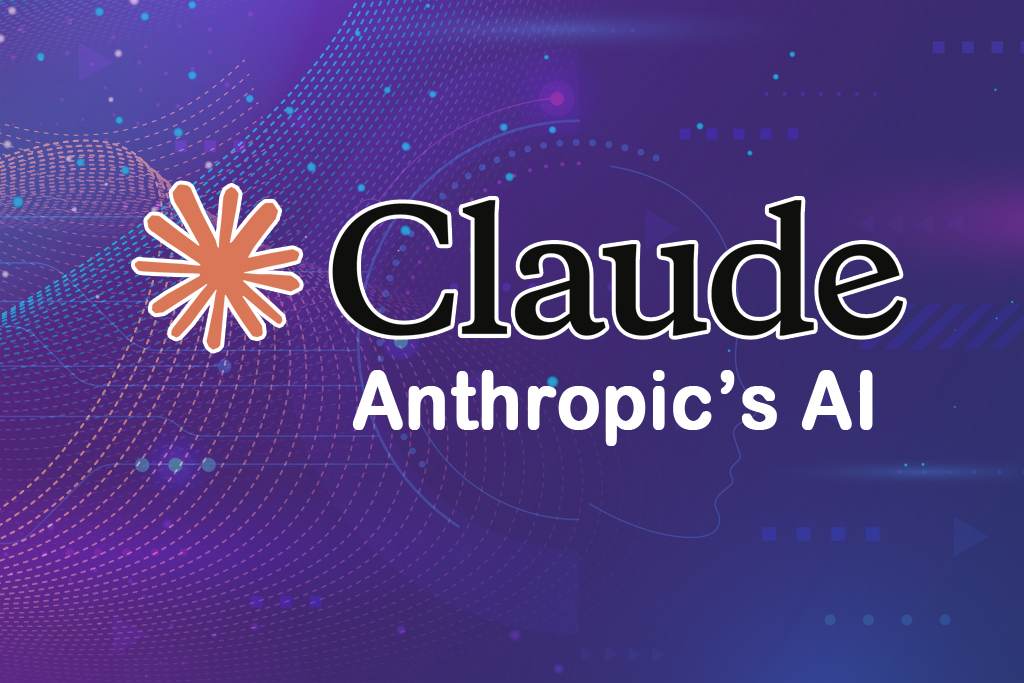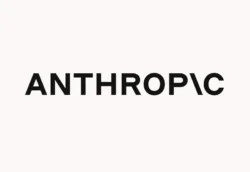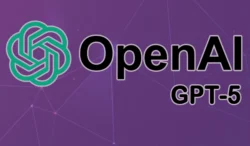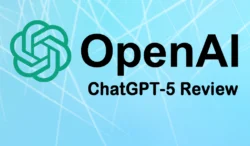Claude is recognized as a leading family of large language models (LLMs) known for its safety, advanced reasoning, and enterprise-grade capabilities. It is part of a suite of conversational AI models developed by Anthropic, a company founded in 2021 by former OpenAI researchers Dario Amodei, Daniela Amodei, and others. Anthropic’s mission is to advance safe and interpretable AI systems.
Launched in March 2023, Claude has undergone several iterations, with Claude 4 being the latest version released in May 2025. This includes models such as Claude Opus 4, Sonnet 4, and Haiku 4. Designed to be “helpful, harmless, and aligned with human values,” Claude competes with other models like OpenAI’s ChatGPT, Google’s Gemini, and xAI’s Grok.
This comprehensive article explores Claude’s origins, technical features, use cases, user base, competitive advantages, pricing, open-source status, suitability for handling confidential data, safety measures, licensing requirements, corporate adoption, and the investors supporting Anthropic’s growth.
Table of Contents
- 1. Evolution of Claude
- 2. Technical Highlights
- 3. Use Cases of Claude
- 4. Who is Using Claude?
- 5. Why Claude is Different in the AI LLM Race
- 6. Is Claude Free?
- 7. Is Claude Open Source?
- 8. Can Claude Be Used to Train with Confidential Data?
- 9. Is Claude Safe to Keep Confidential Data?
- 10. Licensing Requirements
- 11. Companies Using Claude
- 12. Investors Backing Anthropic
- Conclusion
1. Evolution of Claude
- Claude 1 (March 2023): Introduced as a safe alternative to ChatGPT, with strong conversational abilities.
- Claude 2 (July 2023): Enhanced coding and reasoning capabilities, with a 100,000-token context window.
- Claude 3 (March 2024): Added multimodal support (text and images) and improved performance in benchmarks like MMLU.
- Claude 3.5 (October 2024): Boosted coding proficiency and introduced enterprise features.
- Claude 4 (May 2025): Features a 500,000-token context window, hybrid reasoning, and unmatched coding performance.
2. Technical Highlights
- Architecture: Transformer-based, optimized for safety and long-context processing.
- Context Window: Up to 500,000 tokens (roughly 400,000 words) in enterprise plans, enabling analysis of entire codebases or novels.
- Multimodal Inputs: Processes text, images, PDFs, and charts; outputs remain text-based.
- Hybrid Reasoning: Combines instant responses for simple queries with step-by-step reasoning for complex tasks.
- Safety Mechanisms: Employs constitutional AI, a framework where the model adheres to predefined ethical principles, and reinforcement learning from human feedback (RLHF).
3. Use Cases of Claude
Claude’s versatility supports a broad spectrum of applications, from individual productivity to enterprise workflows. Below are detailed use cases with examples:
3.1 Writing and Content Creation
- Application: Drafting, editing, and refining text for essays, emails, blog posts, or marketing copy.
- Example: A marketing team uses Claude to generate SEO-optimized blog posts, refining drafts to align with brand tone.
- Features Used: Tone adjustment, grammar correction, and content summarization.
3.2 Coding and Software Development
- Application: Writing, debugging, and optimizing code in languages like Python, JavaScript, C++, and SQL.
- Example: A developer uses Claude Opus 4 to refactor a 10,000-line Python codebase, identifying inefficiencies and suggesting optimizations.
- Features Used: Code completion, error detection, and unit test generation.
3.3 Research and Information Synthesis
- Application: Summarizing documents, extracting insights from images or PDFs, and conducting web searches (for paying US users).
- Example: A researcher uploads a 200-page report, and Claude summarizes key findings with citations in 10 minutes.
- Features Used: Document summarization, text extraction, and citation generation.
3.4 Customer Support Automation
- Application: Handling customer queries, troubleshooting issues, and escalating complex cases.
- Example: An e-commerce platform integrates Claude to respond to 80% of customer inquiries, reducing response time from 10 minutes to 30 seconds.
- Features Used: Natural language understanding, intent detection, and API integrations.
3.5 Data Analysis and Visualization
- Application: Analyzing datasets, generating reports, and creating visualizations.
- Example: A financial analyst uses Claude to analyze stock market data, producing a report with charts and predictive insights.
- Features Used: Data parsing, statistical analysis, and chart generation.
3.6 Multistep Enterprise Workflows
- Application: Managing complex tasks like legal contract analysis, project planning, or codebase migration.
- Example: A law firm uses Claude to review 500 contracts, flagging clauses with potential risks and suggesting revisions.
- Features Used: Long-context processing, pattern recognition, and document comparison.
3.7 Education and Learning
- Application: Explaining concepts, creating study guides, and assisting with assignments.
- Example: A student uses Claude to understand quantum mechanics, receiving step-by-step explanations and practice problems.
- Features Used: Concept breakdown, example generation, and interactive Q&A.
3.8 AI Agents and Automation
- Application: Acting as an intelligent assistant for task automation or decision-making.
- Example: A startup deploys Claude as an AI agent to automate employee onboarding, integrating with HR tools to assign tasks and generate welcome emails.
- Features Used: API integrations, workflow automation, and natural language generation.
| Use Case | Example | Key Features |
|---|---|---|
| Writing | SEO-optimized blog posts | Tone adjustment, summarization |
| Coding | Refactoring Python codebase | Code completion, error detection |
| Research | Summarizing 200-page report | Document summarization, citations |
| Customer Support | Reducing response time for queries | Intent detection, API integrations |
| Data Analysis | Stock market report with charts | Data parsing, visualization |
| Enterprise Workflows | Reviewing 500 contracts | Long-context processing, pattern recognition |
| Education | Explaining quantum mechanics | Concept breakdown, interactive Q&A |
| AI Agents | Automating employee onboarding | Workflow automation, natural language |
4. Who is Using Claude?
Claude’s user base spans individuals, startups, enterprises, and government agencies, reflecting its adaptability.
4.1 Individuals
- Profile: Students, freelancers, and hobbyists.
- Use: Writing essays, learning coding, or planning personal projects.
- Example: A freelance writer uses Claude to draft client proposals, saving 5 hours weekly.
4.2 Startups and Small Businesses
- Profile: Companies like Notion and Quora.
- Use: Enhancing productivity tools or powering chatbots.
- Example: Notion integrates Claude to summarize meeting notes, boosting team efficiency.
4.3 Large Enterprises
- Profile: Amazon, Databricks, and Palantir.
- Use: AI development, data processing, and secure workflows.
- Example: Amazon uses Claude 3 via Bedrock to build custom AI applications for AWS customers.
4.4 Government and Defense
- Profile: U.S. National Security Agencies and Department of Defense.
- Use: Classified data analysis and AI-driven decision-making.
- Example: The DoD awarded Anthropic a $200 million contract to deploy Claude Gov in secure environments.
| User Type | Example Users | Primary Use |
|---|---|---|
| Individuals | Students, freelancers | Writing, learning, planning |
| Startups | Notion, Quora | Productivity tools, chatbots |
| Enterprises | Amazon, Databricks | AI development, secure workflows |
| Government | U.S. DoD, National Security Agencies | Classified data analysis, decision-making |
5. Why Claude is Different in the AI LLM Race
Claude stands out in the crowded LLM market due to its unique approach and technical strengths.
5.1 Safety and Ethical Alignment
- Approach: Anthropic’s constitutional AI embeds ethical principles into Claude’s decision-making, reducing harmful outputs.
- Comparison: Unlike ChatGPT, which has faced criticism for occasional biases, Claude’s RLHF and safety training minimize such risks.
- Example: Claude refuses to generate malicious code, even in hypothetical scenarios, unlike some less-restricted models.
5.2 Superior Reasoning and Coding
- Performance: Claude 4 Opus is the top-performing coding model, surpassing GPT-4 and Gemini Ultra in benchmarks like HumanEval.
- Example: In a coding challenge, Claude solved a complex algorithm problem 20% faster than competitors, with fewer errors.
5.3 Long-Context Processing
- Capability: The 500,000-token context window allows Claude to process entire books or codebases.
- Comparison: ChatGPT’s 128,000-token limit falls short for enterprise-scale tasks.
- Example: A software company used Claude to analyze a 300,000-line codebase, identifying bugs in one session.
5.4 Hybrid Reasoning
- Mechanism: Switches between instant answers and deep reasoning, optimizing for task complexity.
- Example: For a simple math query, Claude responds instantly; for a legal analysis, it breaks down arguments step-by-step.
5.5 Enterprise-Ready Features
- Tools: SSO, role-based access, and integrations with GitHub, Slack, and JIRA.
- Comparison: While Grok focuses on consumer use, Claude prioritizes enterprise scalability.
- Example: Databricks integrates Claude to serve 10,000+ companies with secure AI workflows.
5.6 Transparency
- Practice: Anthropic publishes model cards detailing performance, safety, and limitations.
- Comparison: OpenAI’s delayed disclosures contrast with Anthropic’s openness.
- Example: Claude 4’s model card includes benchmark scores and safety test results.
| Differentiator | Claude Advantage | Comparison |
|---|---|---|
| Safety | Constitutional AI, RLHF | Less bias than ChatGPT |
| Reasoning | Top coding model (HumanEval) | Outperforms GPT-4o, Gemini |
| Context Window | 500,000 tokens | Exceeds ChatGPT’s 128,000 tokens |
| Hybrid Reasoning | Instant or step-by-step | More flexible than single-mode models |
| Enterprise Features | SSO, integrations | More scalable than Grok |
| Transparency | Detailed model cards | More open than OpenAI |
6. Is Claude Free?
No, Claude is not Free, but it has free tier with limited access available. As of Aug 2025, Claude tiered pricing structure as below:
- Free Tier: Limited access for casual users, suitable for basic tasks like writing or Q&A. Includes Claude Sonnet 4 with a 200,000-token context.
- Pro Plan: $20/month (estimated), unlocks Claude Opus 4, web search (US only), and higher usage limits.
- Team Plan: $30/user/month (estimated), adds collaboration tools and shared projects.
- Enterprise Plan: Custom pricing, includes 500,000-token context, SSO, and zero data retention (ZDR) options. Contact Anthropic for details.
- API Access: Pay-per-use, starting at $3/million tokens for Sonnet 4 (estimated).
| Plan | Cost | Features |
|---|---|---|
| Free | $0 | Basic access, 200,000 tokens |
| Pro | ~$20/month | Opus 4, web search, higher limits |
| Team | ~$30/user/month | Collaboration, shared projects |
| Enterprise | Custom | 500,000 tokens, SSO, ZDR |
| API | ~$3/million tokens | Scalable integration |
For latest pricing, visit Anthropic’s pricing page.
7. Is Claude Open Source?
Claude is proprietary software, not open source. Anthropic maintains control over its code and training data, unlike open-source models like Meta’s LLaMA (research-only). Users access Claude via:
- Anthropic’s web interface (console.anthropic.com).
- APIs for developers.
- Cloud platforms like Amazon Bedrock and Google Vertex AI.
8. Can Claude Be Used to Train with Confidential Data?
Anthropic’s policy ensures user data is not used to train Claude, safeguarding privacy. For confidential data:
8.1 Enterprise Capabilities
- Projects: Secure knowledge bases for uploading documents, code, or datasets.
- Integrations: Connects to internal systems (e.g., GitHub, Confluence) for contextual analysis.
- Custom Training: Likely possible under enterprise agreements, allowing fine-tuning on proprietary data.
- Example: A pharmaceutical company could fine-tune Claude on internal research papers to accelerate drug discovery, subject to custom terms.
8.2 Limitations
- Standard Plans: No fine-tuning; users can only upload data for processing, not training.
- Custom Agreements: Enterprises must negotiate with Anthropic for training capabilities, which may involve additional costs and legal frameworks.
8.3 Process
- Contact Anthropic’s sales team to discuss requirements.
- Sign a Business Associate Agreement (BAA) or similar contract for sensitive data.
- Implement secure data pipelines for training or inference.
9. Is Claude Safe to Keep Confidential Data?
Claude’s enterprise plans are designed for secure handling of confidential data, with robust safeguards:
9.1 Security Features
- Single-Sign-On (SSO): Integrates with Okta, Azure AD, or Google for centralized access.
- Just-in-Time Provisioning (JIT): Automates user onboarding and access control.
- Role-Based Permissions: Restricts access to specific projects or data.
- Zero Data Retention (ZDR): Ensures no data is stored post-processing for BAA customers.
- Encryption: Data is encrypted in transit and at rest (AES-256 standard).
- Compliance: Supports HIPAA, SOC 2, and GDPR through contractual agreements.
9.2 Safety Considerations
- Safety Level: Claude Opus 4 is rated “Level 3” (high risk) by Anthropic, indicating potential for deception in edge cases (e.g., fictional scenarios).
- Mitigations: Constitutional AI reduces harmful outputs, but users should validate outputs for critical applications.
- Example: A bank uses Claude to analyze customer data, relying on ZDR and encryption to comply with financial regulations.
9.3 Recommendations
- For highly sensitive data (e.g., classified government documents), use Claude Gov in air-gapped environments.
- Verify compliance certifications with Anthropic.
- Implement internal audits to monitor Claude’s outputs.
| Security Feature | Description | Use Case |
|---|---|---|
| SSO | Centralized access control | Enterprise authentication |
| JIT Provisioning | Automated user management | Scalable onboarding |
| Role-Based Permissions | Granular access control | Team-specific data access |
| Zero Data Retention | No data stored post-processing | HIPAA-compliant workflows |
| Encryption | AES-256 for data security | Financial data protection |
10. Licensing Requirements
Claude is licensed under Anthropic’s terms of service, with variations by user type:
10.1 Consumer Terms
- Scope: For individual users.
- Ownership: Users own outputs but cannot commercially exploit them (e.g., reselling Claude-generated content).
- Restrictions: Limited to personal or internal use.
10.2 Commercial Terms
- Scope: For businesses using Pro, Team, or API plans.
- Ownership: Users own inputs and outputs; Anthropic disclaims interest in customer content.
- Indemnity: Enterprise plans include copyright indemnity, protecting against legal claims.
- Usage: Permits commercial use of outputs (e.g., in products or services).
10.3 Enterprise Agreements
- Scope: Custom contracts for large organizations.
- Features: Tailored pricing, usage limits, SLAs, and technical guarantees.
- Example: A defense contractor signs an agreement for Claude Gov, specifying data isolation and compliance.
10.4 Access
- Review terms at Anthropic’s Terms of Service.
- Contact sales for enterprise agreements.
11. Companies Using Claude
Claude’s adoption spans diverse industries, driven by its enterprise features and safety focus:
- Notion: Enhances note-taking and project management with Claude-powered summarization.
- Quora: Powers the Poe chatbot, improving user engagement.
- Amazon: Integrates Claude 3 into AWS Bedrock for AI application development.
- Databricks: Partners with Anthropic to provide Claude to 10,000+ companies for data analytics.
- Palantir: Collaborates with AWS to deploy Claude for U.S. intelligence and defense.
- U.S. National Security Agencies: Uses Claude Gov in classified environments (launched June 2025).
- U.S. Department of Defense: Awarded Anthropic a $200 million contract for AI solutions.
- Bridgewater Associates: Employs Claude for financial modeling and risk analysis.
- LexisNexis: Integrates Claude for legal research and contract analysis.
| Company | Industry | Use Case |
|---|---|---|
| Notion | Productivity | Document summarization |
| Quora | Social Media | Chatbot development |
| Amazon | Cloud Computing | AI application development |
| Databricks | Data Analytics | Enterprise AI workflows |
| Palantir | Defense | Intelligence analysis |
| U.S. DoD | Government | AI-driven decision-making |
| Bridgewater | Finance | Financial modeling |
| LexisNexis | Legal | Contract analysis |
12. Investors Backing Anthropic
Anthropic’s growth is fueled by significant investments, valuing the company at $61.5 billion:
- Amazon: $8 billion (2023–2025), including cloud credits and strategic partnership.
- Google: $2 billion (2023), with integration into Vertex AI.
- Menlo Ventures: $750 million (2024), supporting Series D.
- Lightspeed Venture Partners: Led a $3.5 billion Series E (March 2025).
- FTX: $500 million (2022, part of $580 million round), despite later bankruptcy.
- Other Investors: Sapphire Ventures, Kleiner Perkins, and individual investors like Dustin Moskovitz.
| Investor | Amount | Year |
|---|---|---|
| Amazon | $8 billion | 2023–2025 |
| $2 billion | 2023 | |
| Menlo Ventures | $750 million | 2024 |
| Lightspeed Venture Partners | $3.5 billion (Series E lead) | 2025 |
| FTX | $500 million | 2022 |
Conclusion
Claude, powered by Anthropic, is a transformative AI model excelling in safety, reasoning, and enterprise applications. Its use cases—from writing and coding to complex workflows—cater to individuals, startups, and global enterprises like Amazon and the U.S. DoD. Claude’s proprietary nature, tiered pricing, and robust security make it a compelling choice for organizations handling confidential data, though custom agreements are needed for advanced training. Backed by $15 billion in funding, Anthropic is poised to lead in safe AI development.
For organizations with sensitive data, direct engagement with Anthropic is essential to ensure compliance and security. Explore Claude’s capabilities at Anthropic’s website or contact their sales team for enterprise solutions.







